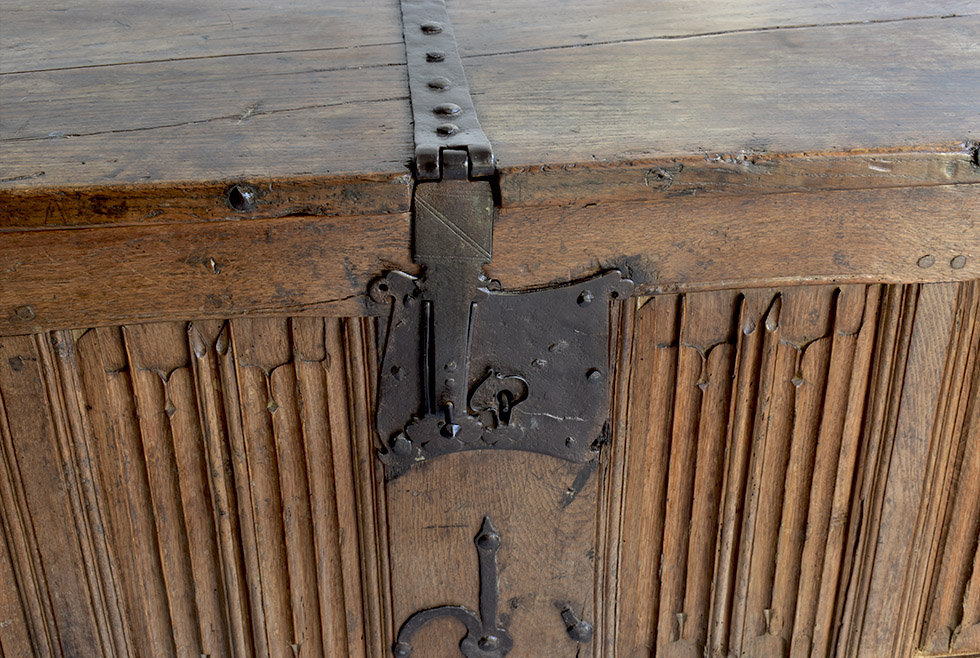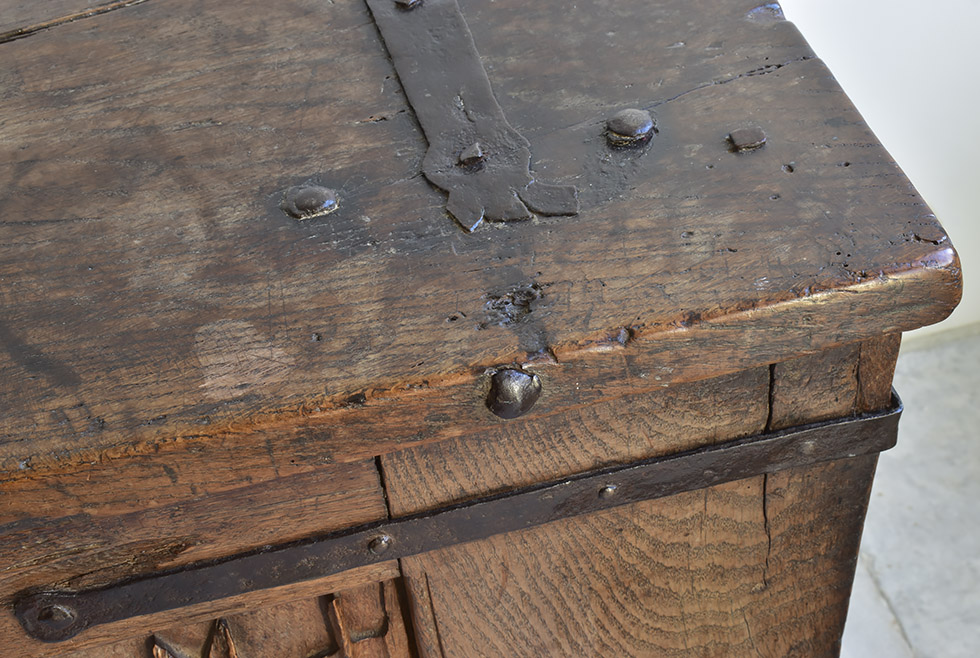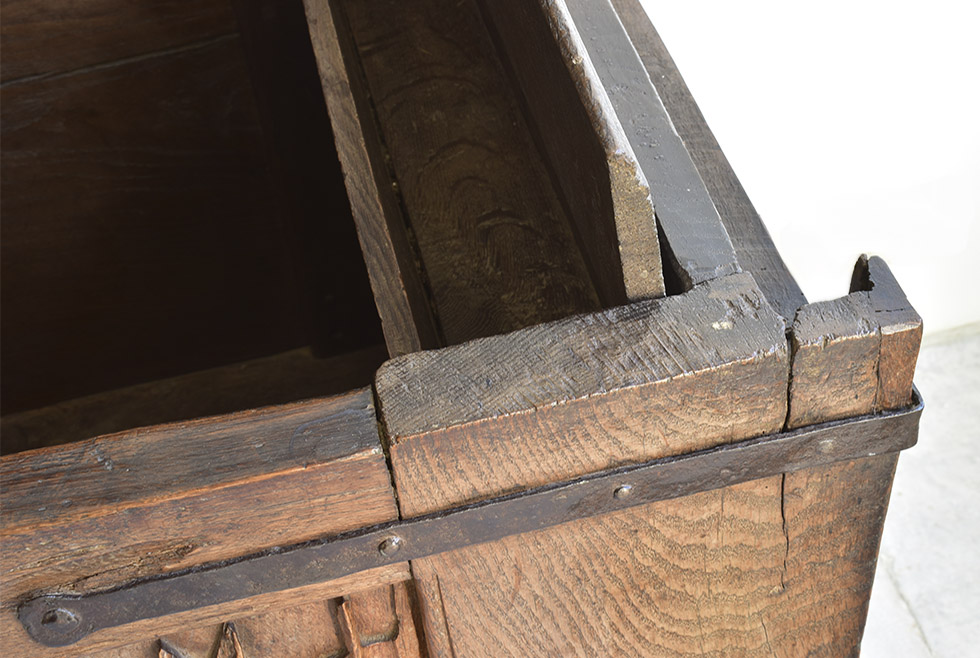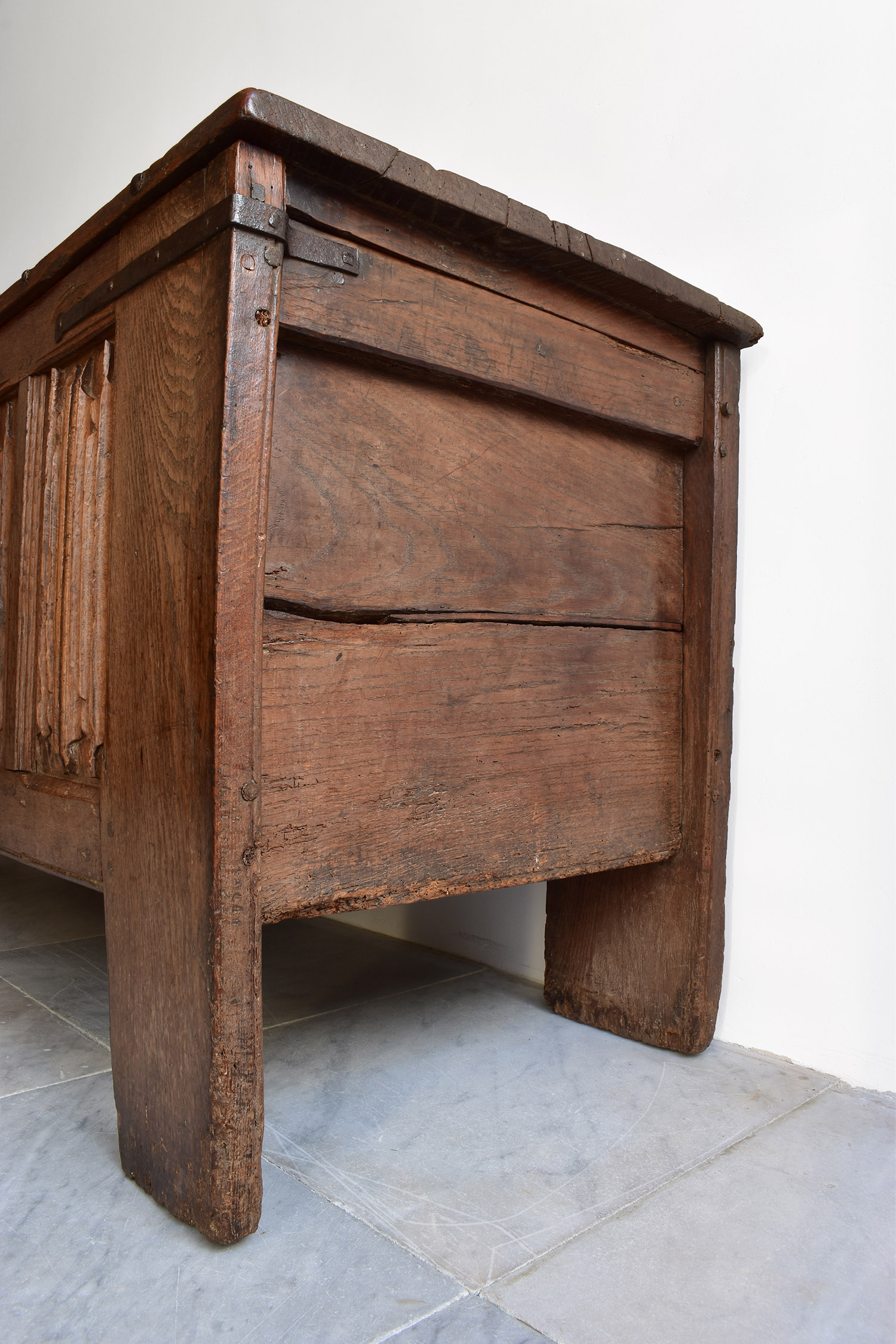OAK LINENFOLD CHEST
ca. 1500-1550

Material and construction
A rare late medieval chest with a hybrid construction: mainly a joined ‘clamp-front’ chest, as the Lower Rhine ‘Stollentruhe’ with broad stile feet, constructed of large oak boards which were riven and planed.
The front on the other hand is of a joined and framed construction with four linenfold panels.
The back and inside sloping sides are each formed from single planks held to the full height stiles with provide mortises into witch the boards are pegged. Inward-sloping sides allowing space for lid cleat within width of chest.
The panelled front follows the the elegant construction of the joined and panelled chests in the Low Countries of the late 15th and early 16th century, of which not only the front, but also the sides, back and the lid have a joined construction.
The bottom of this chest consists of two boards cut into the sides and shallow rebates in the stiles.The lid has a cleat at each end, and consists of one 52cm wide plank and a 10cm wide extension. The boards of the lid, the back, the sides are tapered in cross-section, ranging from 2.8cm (max) to 2.1cm. The tapering is the result of converting timber by cleaving or riving, ie splitting along the grain. Compared with sawing, riving preserves the strength of the wood and is less likely to lead to warping. The inside surfaces of the chest is very smooth as the uneven riven surface has been adzed and planed. In contrast, the undersides of the bottom boards are left rough.
Wrought Ironwork
To embellish and reinforce the chest with iron mounts, large hinges and straps, terminating in Fleur-de-Lis pattern, where added to the lid and the panelled front, and just like the flower decorated lockplate and hasp, all fixed with headed nails. There is mild dark staining of the oak around the iron mounts, possibly because of low tannin content in the oak.
Linenfold panels
Folded drapery was a source of appreciation in medieval art. The term ‘linenfold’ refers to a pattern in late gothic furniture panels in Northern Europe from the late 15th century until the 16th century. Carved with paralel mouldings in such a way that they suggest the edge of folded cloth, in some examples even imitating the hooks and edgings of textile hangings. The four curly linenfold panels in the front of this chest are deeply carved and provide a delicate interplay of light and shade.
Colour
Untouched condition with wonderful faded colour
Provenance:
private collection The Netherlands
Comparative literature:
- Baumeier, Stefan, Beschlagene Kisten; Die ältesten Truhen Westfalens, Essen, 2012.
- Victor Chinnery, Oak furniture, The British Tradition, Woodbridge, 1979.
- Stülpnagel, Karl Heinrich von, Die gotischen Truhen der Lüneburger Heideklöster, Cloppenburg, 2000.
- Windisch-Graetz, Franz, Möbel Europas, Band I, Von der Romanik zur Spätgotik, München, 1982.
- Jaqueline Boccador, Le Mobilier Français du Moyes Age A La Renaissance, Saint-Just-en-Chaussée,1988.
- Christopher G Pickvance, The Antiquaries Journal, page 1 of 37,The Society of Antiquaries of London, the Canterbury group of arcaded gothic early medieval chests, London, 2018.





LATE GOTHIC CHEST
- ca. 1500-1550
- South-East Holland, Rijnland
- Oak
- H. 76 cm, W. 144,5 cm, D. 61 cm